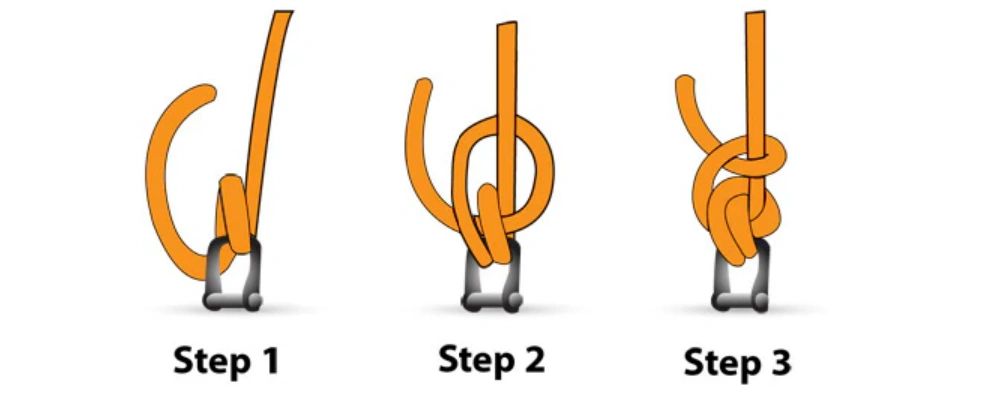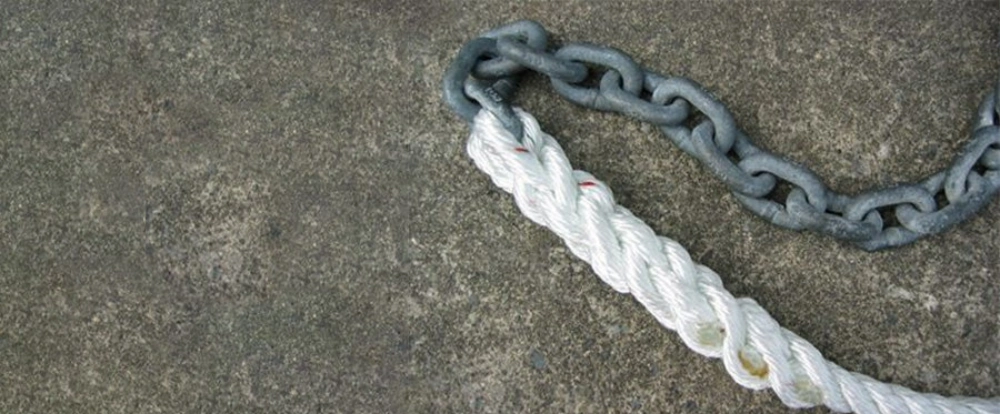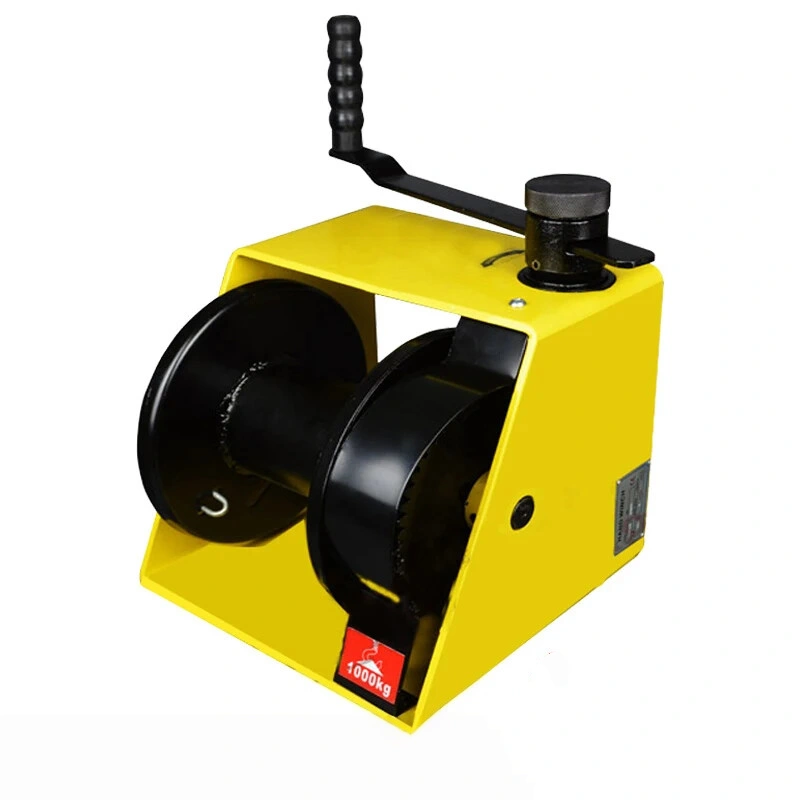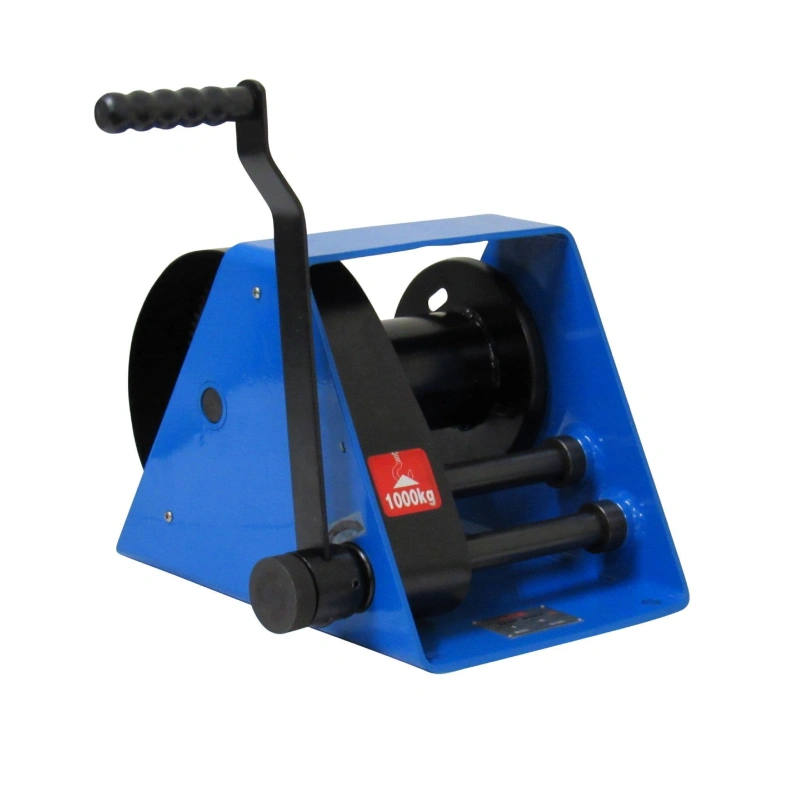If you want a knot that holds strong, the Anchor Bend (sometimes called the Anchor Hitch) is your best bet for how to tie a rope to an anchor chain. This knot gives you top-notch security under heavy loads, so you can trust it when anchoring your boat.
Many sailors prefer it because it stays tight and rarely slips. You might find it tough to untie after a big pull, but that just proves how reliable it is. When you pair this knot with a certified anchor chain from Powerful Machinery, you get even more peace of mind out on the water.
Key Takeaways
The Anchor Bend knot is the best choice for tying a rope to an anchor chain. It holds strong under heavy loads and rarely slips.
Always check your knots and connections before anchoring. Inspect for tightness and signs of wear to ensure safety.
Using a rope-to-chain splice can maintain nearly 100% of the rope’s strength. This method is ideal for heavy-duty anchoring.
Choose certified anchor chains, like those from Powerful Machinery, for added safety and reliability. They resist corrosion and are designed for marine use.
Match your rope diameter with the correct chain grade to avoid failures. Using the right combination is crucial for a secure anchoring system.
How to Tie a Rope to an Anchor Chain?
Anchor Knot Steps

If you want to know how to tie a rope to an anchor chain, you need a knot that holds tight and stays secure. The anchor bend is the go-to choice for most boaters. You might hear it called the anchor hitch, but both names mean the same knot. Let’s walk through how to tie the anchor bend so you can anchor with confidence.
Wrap the end of your rope around the shackle or chain twice. Keep these turns open and neat.
Take the free end and pass it behind the standing part of the rope. Feed it through the first two turns you made and pull it snug.
Tie a half hitch around the standing line. Pull it tight to lock everything in place.
Secure the free end. You can seize it with twine or use a long tag end to tie a backup knot, like half of a Double Fisherman’s.
You should always check your knot before you drop anchor. If you want to know how to tie a rope to an anchor chain the right way, make sure every step is tight and secure. The anchor bend works best when you use a quality rope and a certified anchor chain.
Tip: Avoid common mistakes when you tie the anchor bend. Don’t use a thimble splice, since it can hide corrosion. Always secure the shackle pin, and never tie your rode directly to the chain or anchor without proper technique.
Using Powerful Machinery Studless Anchor Chain
When you want to know how to tie a rope to an anchor chain, you also need the right chain for the job. Powerful Machinery Studless Anchor Chain gives you a strong, reliable connection every time. This chain is designed for marine use and comes with features that make anchoring safer and easier.
Here’s why the Powerful Machinery Studless Anchor Chain stands out:
Advantage | Description |
|---|---|
Superior Strength and Durability | The chain has no studs, so there are fewer weak points. It holds up under heavy loads. |
Less Prone to Corrosion | Smooth links resist rust and wear, even in saltwater. |
Versatility | You can use it for anchoring, mooring, or towing. No special changes needed. |
Easy Handling and Maintenance | The simple design makes splicing easy and maintenance quick. |
Enhanced Flexibility | The chain adapts to uneven seabeds, so your anchor sets better. |
Lighter Weight | It’s easier to handle, especially on smaller boats. |
Reduced Snagging Risk | No studs means less chance of snagging on debris or rocks. |
You get even more benefits with Powerful Machinery chains. The chain’s flexibility helps you anchor on rough or uneven seabeds. Its lighter weight makes it easier to deploy and retrieve, especially if you work alone or have a smaller vessel.
You’ll find it stores neatly on board, and you won’t have to worry about it catching on underwater obstacles.
If you want to know how to tie a rope to an anchor chain for maximum safety, always choose certified products. Powerful Machinery Studless Anchor Chain meets international standards and comes with RINA and BV certifications.
You can trust it to keep your boat secure, whether you’re anchoring for a quick stop or staying overnight.
Note: Safety starts with your gear. Pick a high-quality rope, tie the anchor bend carefully, and use a certified anchor chain. This combination gives you the best chance for a safe and reliable anchoring experience.
Best Methods for Anchoring
Rope-to-Chain Splice

You might wonder if there’s a better way to connect your rope to an anchor chain than using a knot. The rope-to-chain splice stands out as one of the best methods for anchoring, especially if you use a windlass. This technique lets your rope transition smoothly onto the chain and into the chain locker.
Splicing keeps almost all the rope’s strength, while knots can weaken it by up to 30%. If you want reliability and durability, splicing is the preferred choice for critical marine applications.
Here’s why you might choose a rope-to-chain splice:
It maintains nearly 100% of the rope’s strength.
It works perfectly with windlasses, so you avoid jams or snags.
It lasts longer under heavy loads and tough conditions.
If you’re working with Powerful Machinery anchor chains, you get even more peace of mind. These chains hold certifications from ABS, LR, BV, DNVGL, and more, so you know your anchoring system meets strict safety standards.
Anchor Knot vs Splice

Choosing between an anchor knot and a rope-to-chain splice depends on your gear and conditions. The anchor bend knot is quick and easy. You can tie it without special tools, and it holds strong for most recreational boats. Splicing takes more time and skill, but it’s the best option for heavy-duty anchoring or when you use a windlass.
Let’s compare the performance and risks:
Method | Strength Retention | Best Use Case | Failure Risk |
|---|---|---|---|
Anchor Bend Knot | 70–80% | Small boats, quick setup | Moderate |
Standard Tapered Splice | 80–90% | Windlass, heavy loads | Low |
Long Chain Splice | Up to 94% | High-tensile chain, large vessels | Very Low |
You should also consider using shackles or anchor swivels for extra security. These components help align load-bearing surfaces and let your anchor rotate freely, which is important when wind or tide shifts. Always check the manufacturer’s minimum break load to avoid weak links.
If you want the best methods for anchoring, match your technique to your equipment and environment. Powerful Machinery anchor chains give you the reliability you need for any method you choose.
Tips for Secure Anchoring
Checking Knot Security
You want your anchor to hold, so checking your knots and connections is a must. Start by inspecting your knots every time you anchor. Look at backup knots and make sure they are tight. If you use a shackle or fixed anchor point, check for corrosion or looseness.
Use a wrench to tighten any bolts if needed. Before you trust your setup, give the whole system a good pull test. Apply steady pressure to the rope and watch for any movement or signs of weakness. If you see anything odd—like stretching, slipping, or deformation—fix it before you drop anchor.
Tip: Make it a habit to inspect your anchor rode at least once a year. Pay close attention to the rope, especially the spliced ends and any thimbles. Look for wear, cuts, or abrasion. Replace anything that looks worn out.
Here’s a quick checklist for secure knots:
Inspect all knots and backup knots before use.
Check shackles and anchor points for rust or looseness.
Perform a pull test to confirm everything holds.
Report or replace any damaged parts right away.
Chain and Rope Compatibility
Matching your rope and chain matters just as much as tying a good knot. If you use the wrong size or type, your anchoring system can fail. Always pair your rope diameter with the right chain grade.
For example, a 12mm rope works well with a 7mm Grade 40 galvanized chain or an 8mm G3 stainless chain. Here’s a handy table to help you choose:
Rope Diameter | Compatible Chain Grades |
|---|---|
10mm | 6mm Grade 40 Galvanized |
12mm | 7mm Grade 40 Galvanized, 8mm G3 Stainless |
14mm | 8mm Grade 40 Galvanized, 10mm G3 Stainless |
16mm | 10mm Grade 40 Galvanized, 10mm G3 Stainless, 8mm G6 Stainless |
18mm | 10mm Grade 40 Galvanized, 10mm G6 Stainless, 8mm Grade 70 Galvanized |
20mm | 12mm Grade 40 Galvanized, 12mm Grade 30 Galvanized |
24mm | 13mm/14mm Grade 40 Galvanized, 10mm Grade 70 Galvanized |
When you use Powerful Machinery anchor chains, you get certified strength and corrosion resistance. These chains work with a wide range of marine ropes, so you can build a system that fits your boat and conditions.
Common mistakes can ruin your anchoring setup. Watch out for these:
Not managing tension properly—too tight or too loose can both cause problems.
Using the wrong anchor or chain for your boat size.
Skipping the scope calculation or not checking the bottom type.
Ignoring changing weather or tides.
Remember: Always anchor according to the bottom surface, use enough scope, and monitor your setup as conditions change. This way, you keep your boat safe and secure every time you drop anchor.
Conclusion
Choosing the right knot or splice makes your anchoring setup safer and more reliable. Certified anchor chains from Powerful Machinery give you peace of mind. Here’s why certification matters:
Benefits of Certification | Description |
|---|---|
Baseline Production Standards | You get consistent quality and safety. |
Legal Requirements | Certified chains help you meet marine regulations. |
Quality Assurance | You know your gear meets strict standards. |
Keep your system in top shape:
Inspect chains and knots for rust or wear.
Rinse with freshwater after saltwater use.
Check shackles and connectors often.
Practice your knots, review product guides, and reach out to marine experts for advice. This way, you anchor with confidence every time.
FAQ
How do you fasten a line to an anchor chain securely?
You can fasten a line to an anchor chain using the anchor bend knot. Wrap the rope twice around the chain, pass the end through, and finish with a half hitch. Always check the knot before you drop your anchor.
What type of rope works best for an anchor line?
You want a rope that resists abrasion and handles shock loads. Most boaters choose nylon for their anchor line. Nylon stretches under load, which helps absorb sudden pulls from waves or wind.
Can you use an anchor shackle with a rope and chain?
Yes, you can use an anchor shackle to connect your rope to the chain. Make sure the shackle matches the size of your chain and rope. Tighten the pin securely and inspect it for corrosion before every trip.
How often should you inspect your anchor chain and rope?
You should inspect your anchor chain and rope before each outing. Look for rust, fraying, or weak spots. Replace any damaged parts right away. Regular checks help keep your anchoring system safe.
What’s the difference between a knot and a splice for connecting rope to chain?
A knot is quick and easy to tie, but a splice keeps more of the rope’s strength. Use a knot for short trips or emergencies. Choose a splice for long-term use or when you need extra reliability.


